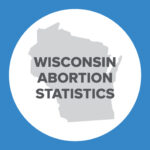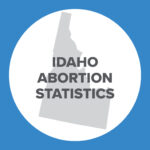Abortion Reporting: Alaska (2019)
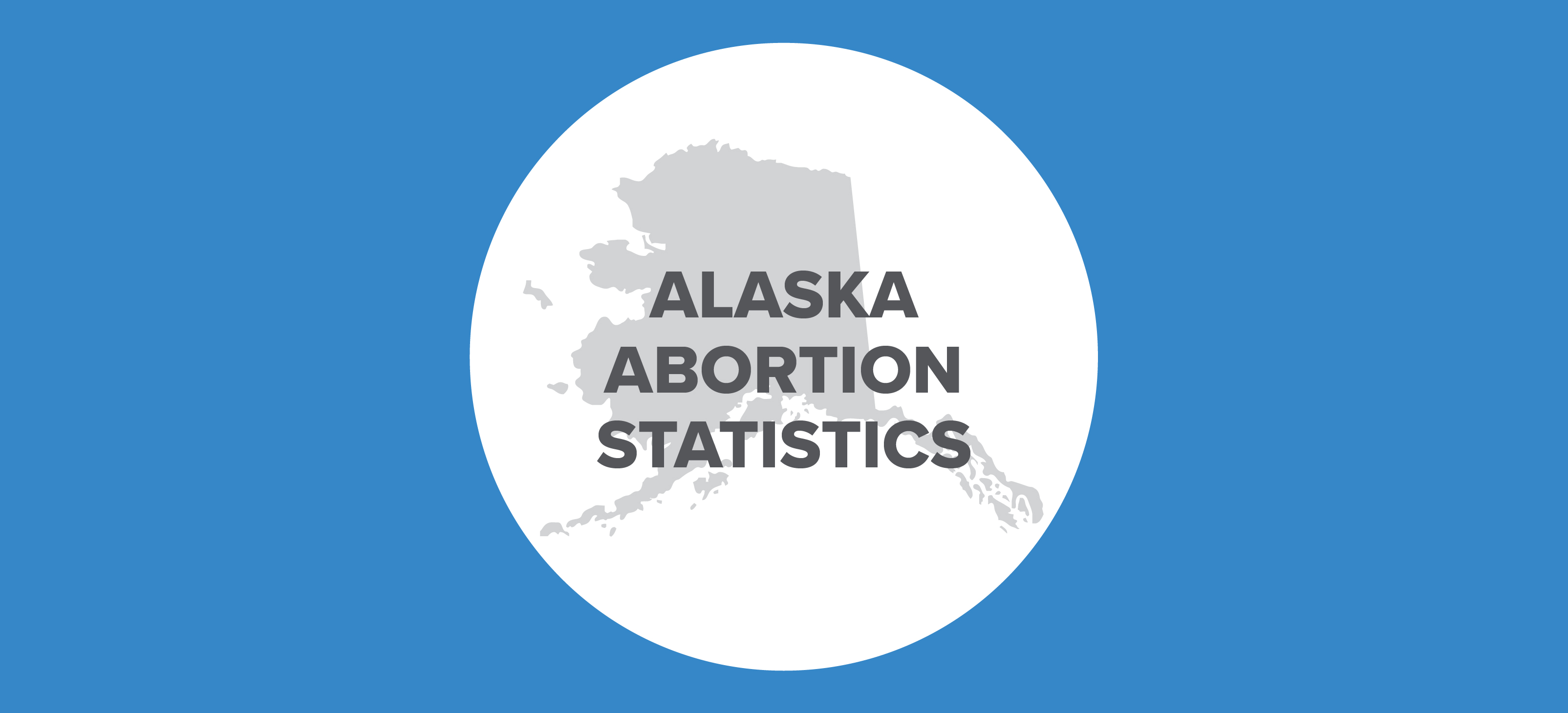
Alaska’s 2019 abortion report was published by the Alaska Department of Health and Social Services in March 2020. Alaska is one of the first states to make 2019 abortion statistics available to the public.
Changes in Alaska Abortions, 2018-2019

The report does not include information on Planned Parenthood’s Alaska abortion market share.
Abortion Totals and Trends
In 2019, there were 1,270 abortions reported in Alaska, a decrease of one percent (13 abortions) from the previous year. However, chemical abortions dropped by nearly 16 percent (57 abortions) from 2018 to 2019. The Charlotte Lozier Institute estimates that Alaska’s abortion rate in 2019 was 8.7 abortions per 1,000 women ages 15 to 44, lower than the national rate.
State Report Summary
The vast majority of abortions performed in Alaska in 2019 (98 percent) were performed on Alaska residents. Sixteen abortions were performed on women from other states, and three abortions were on women from other countries. Five abortions were on women of unknown residency. Fifty-six percent of Alaska abortions were performed on women in their twenties (28 percent on women ages 20 to 24 and 29 percent on women ages 25 to 29). Thirty percent of the abortions were on women in their thirties, and four percent were on women age 40 or older. Ten percent were on girls under the age of 20.
Just over half the abortions reported in Alaska (51 percent) were on white women, while 23 percent were on American Indian or Alaska Native women. Seven percent were on black women, with another seven percent on Asian or Pacific Islander women. Eight percent of the abortions reported in Alaska were on women of other or multiple races, and three percent were performed on women whose race was not reported. The Charlotte Lozier Institute estimates that Asian and Pacific Islander women had the lowest abortion rate in 2019 at 6.7 abortions per 1,000 women of childbearing age, while black women had the highest at 16.9. Ninety-six percent of the abortions were on non-Hispanic women, compared to just four percent on Hispanic women.
Forty-six percent of Alaska abortions were performed on women with 12 years of education. Thirty-five percent were on women with 13 or more years and eight percent on women with fewer than 12 years of education, while 11 percent of the abortions were on women whose level of education was not reported. Seventy-four percent of the abortions reported in Alaska were on unmarried women, and 20 percent were on married women. Six percent of the women did not have their marital status reported.
Forty-five percent of the abortions were performed on women who had no previous live births. Eighteen percent were on women with one prior live birth, and 36 percent were on women with two or more. Sixty-four percent of the abortions were on women who had never had an abortion before. Twenty-one percent were on women with one previous abortion and 14 percent on women with more than one prior abortion.
State funds paid for the largest proportion of Alaska abortions (45 percent). Forty-one percent were self-pay, and seven percent were covered by private insurance. Eight percent were funded through some other means. Twelve percent of the women undergoing abortions received informed consent materials.
A large majority of the abortions (60 percent) occurred between five and eight weeks of gestation. Two percent were performed between one and four weeks, and 28 percent occurred from nine to 12 weeks of gestation. Ten percent were performed from 13 to 16 weeks of gestation. Just two abortions occurred between 17 and 20 weeks, and no abortions were reported at or after 21 weeks. Two-thirds of the abortions reported in Alaska were performed using suction curettage. Twenty-four percent were chemical abortions, including one abortion induced using methotrexate. Nine percent were dilation and evacuation procedures. There was one prostaglandin abortion and one performed using a different, unspecified method. Five of the abortions were performed because the unborn babies had congenital anomalies, although the report does not indicate which type of anomaly the babies had.
Planned Parenthood in Alaska
While Alaska does not report the number of abortions performed at each abortion facility in the state, it is likely that Planned Parenthood accounts for the majority. Alaska’s four abortion centers are operated by Planned Parenthood, although a few abortions are performed in other facilities such as hospitals and doctor’s offices. In 2016, Planned Parenthood of the Great Northwest and the Hawaiian Islands (PPGNHI), the affiliate that operates Planned Parenthood’s Alaska centers, filed a lawsuit challenging second- trimester abortion safety regulations. In its complaint, PPGNHI noted that it performed around 1,300 abortions in 2015, or approximately 97 percent of the abortions reported in Alaska that year.
Planned Parenthood’s four Alaska centers all dispense chemical abortion drugs, and three of the centers perform surgical abortions through 13 weeks of gestation. According to Alaska’s annual abortion report, 94.6 percent of the abortions reported in 2019 were performed at 13 weeks or earlier.
State Ranking
In the Charlotte Lozier Institute’s survey of abortion reporting across the country, Alaska’s reporting was ranked at 21st best. To improve its reports, Alaska could include information on the types of congenital anomalies diagnosed in the unborn babies who were aborted. Alaska could also report whether any women suffered complications related to their abortions.
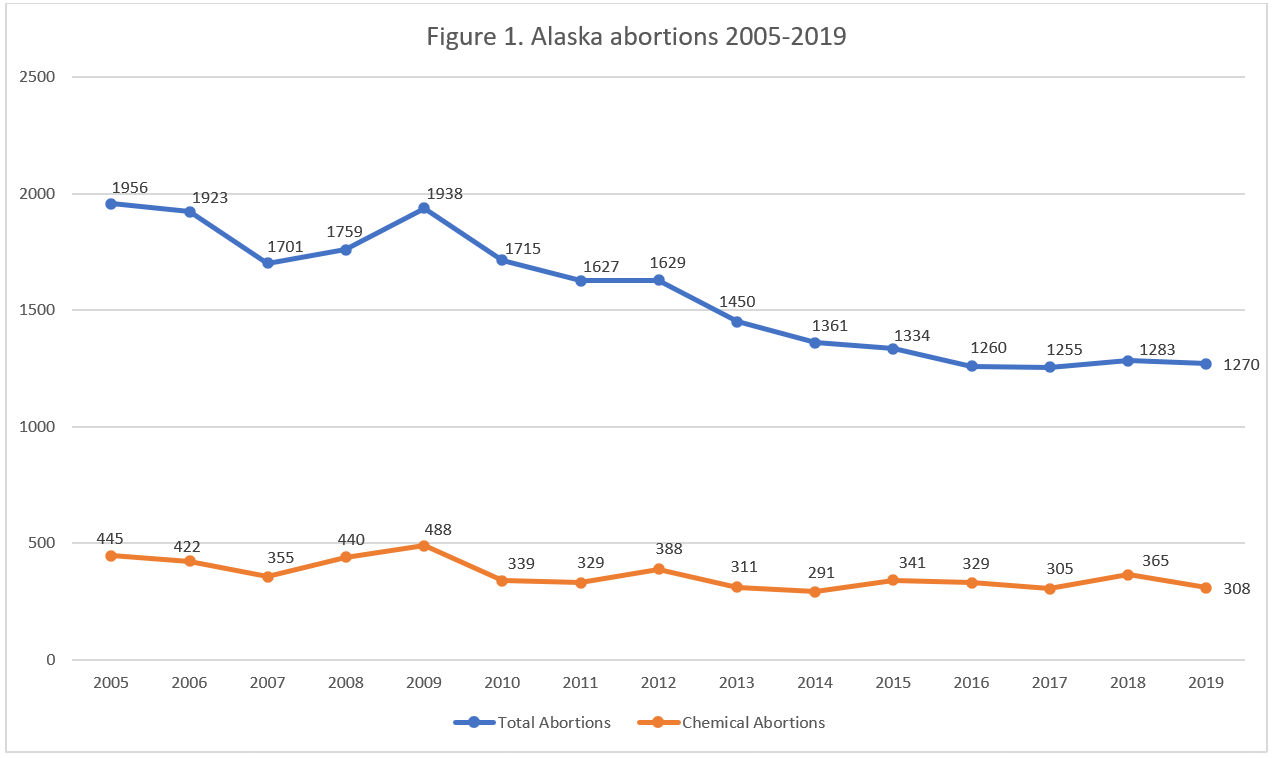
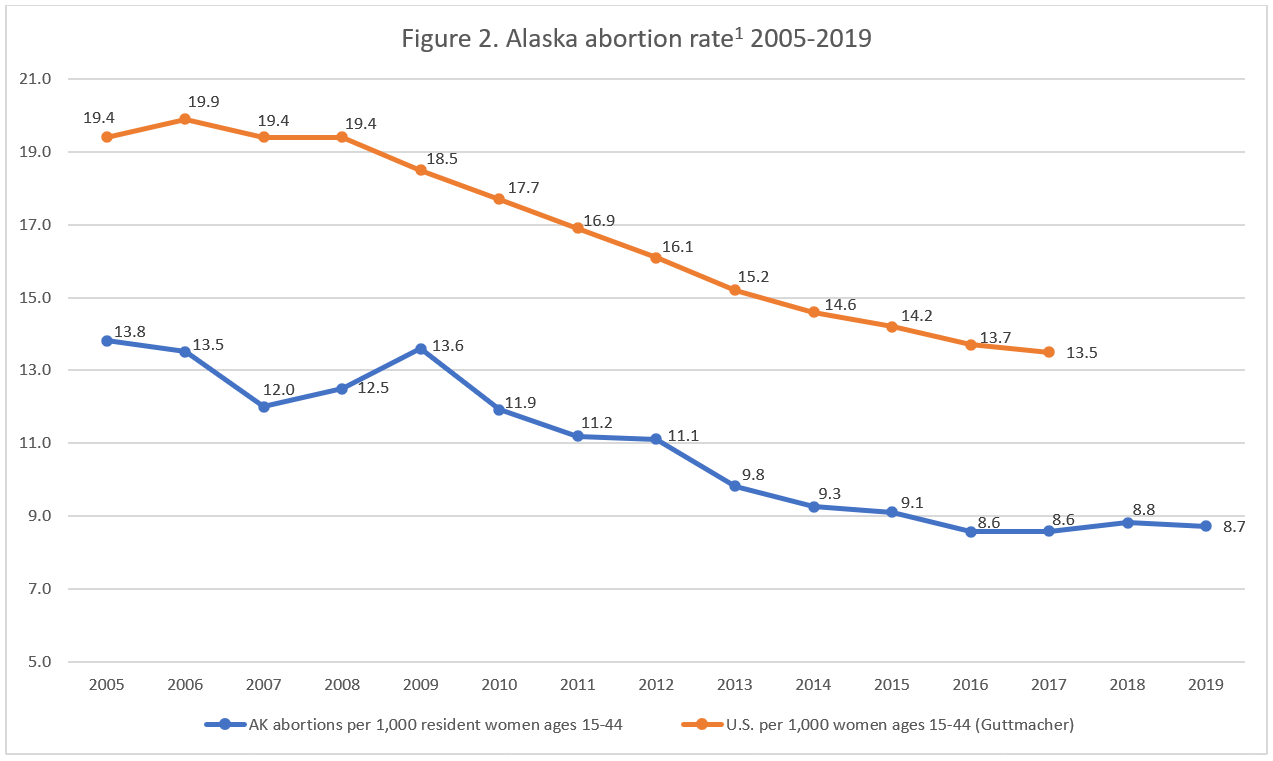
- Rates were calculated by CLI using population estimates from the United States Census Bureau. The rates were calculated using the following formula: (total number of abortions performed in Alaska ÷ number of resident women ages 15-44) x 1,000. Rates may differ slightly from previous CLI articles due to revised population estimates and abortion totals.






















